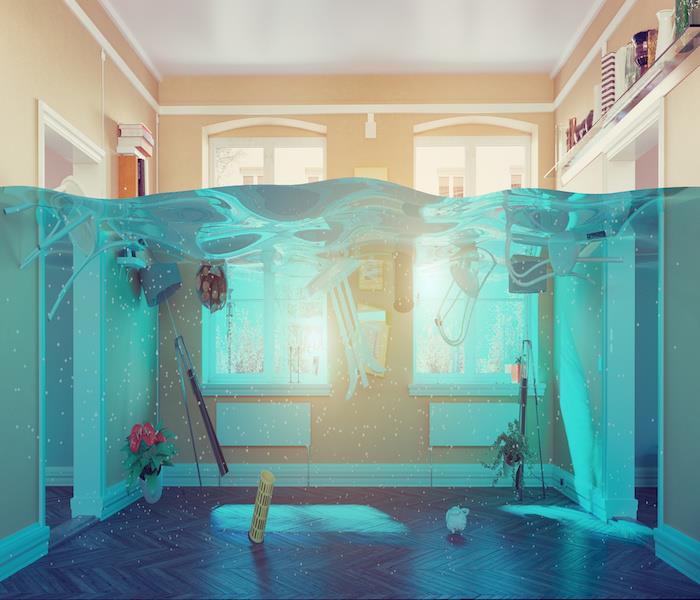Dangers of Water Damage
5/16/2016 (Permalink)
There are several different types of water damage that can affect the health of the occupants of a home or building. The most common types of water damage are clean water damage from leaking appliances, dirty water damage from plumbing issues, black water damage from flooding, bathroom-related water damage, and high indoor humidity. Based on the type of water damage that occurs and the amount of damage, the health effects can range from minimal to potentially significant.
The following are the different types of water damage, what can cause these types of water damage, and the health effects that can be caused by the damage.
Clean Water Damage
Clean water is given that name because it doesn’t contain harmful microorganisms. This type of water is used in most household appliances like refrigerators, washing machines, dishwashers, hot water systems, and sinks. Water damage that comes from issues with these appliances are typically caused due to leaks. Given that this water is free of harmful microorganisms, it’s quite safe to humans not causing any serious health problems. But while the water itself may be relatively safe, it should be cleaned up immediately as it could result in the growth of mold with 24 to 48 hours if left alone. Those mold spores could be potentially harmful, especially for people that suffer from allergies or asthma.
Dirty Water Damage
Dirty water damage is a type that can cause serious health problems to occupants. This type of damage is caused by plumbing issues, typically either sump pump failure or an overflowing toilet. As the water is already contaminated by a variety of microorganisms, it can cause serious health problems in addition to the usual mold growth, spore formation, and aerosolization. If you have dirty water damage, you should have professionals handle to cleanup to ensure a thorough cleaning. However, if you insist on cleaning it yourself, make sure you wear protective gear which includes rubber boots, thick non-porous gloves, long pants, a long sleeve shirt, goggles, and a face mask. When you’ve finished cleaning, disinfect that areas with industrial strength disinfectants that will kill any of the remaining microorganisms.
Black Water Damage
The most dangerous type of water damage is black water or floodwater. This type of water is already filled with several contaminants like microorganisms, raw sewage, as well as harmful and toxic chemical wastes. Only professionals that are trained and equipped to handle this toxic water should handle the cleanup process. However, if you do accidentally come into contact with floodwater, you should rinse the body part immediately with warm water and scrub it with soap, rinsing with hot water.
The cleaning of this type of water damage includes the removal of the water, cleaning, drying, and purifying the air getting rid of any harmful molecules that may remain and might have gotten airborne. Floodwater is also notorious for mold growth and spore formation. While mold growth itself is not a health hazard, the spores tend to get into the air and have the potential to get lodged into the inner surfaces of airway passages. In a healthy person, they can cause a cough, throat irritation, or sneezing. For someone with allergies or asthma, it can cause a life threatening asthma attack. If the mold remains untreated for years, it can cause respiratory and dermatologic issues.
Bathroom-related Water Damage
Given that most bathroom appliances use a great deal of water, it’s very easy to experience water damage in that part of the house. Performing regular maintenance in the bathroom can help to prevent such damage from occurring, especially under the sink, the bathroom tiles, and behind the toilet. If you witness water stains appearing, that is an indicator that there is the potential for mold growth.
High Indoor Humidity
Basements, crawlspaces, and the like are dark, damp, and warm and thus are ideal spaces for mold growth. A way to ensure that you don’t suffer mold growth in such spaces is to consider installing a dehumidifier.
Water damage can be quite troublesome for your health depending on the type of water damage and how much of it there is. If you suffer from water damage in your home, call the professionals at SERVPRO for a full remediation.






 24/7 Emergency Service
24/7 Emergency Service
